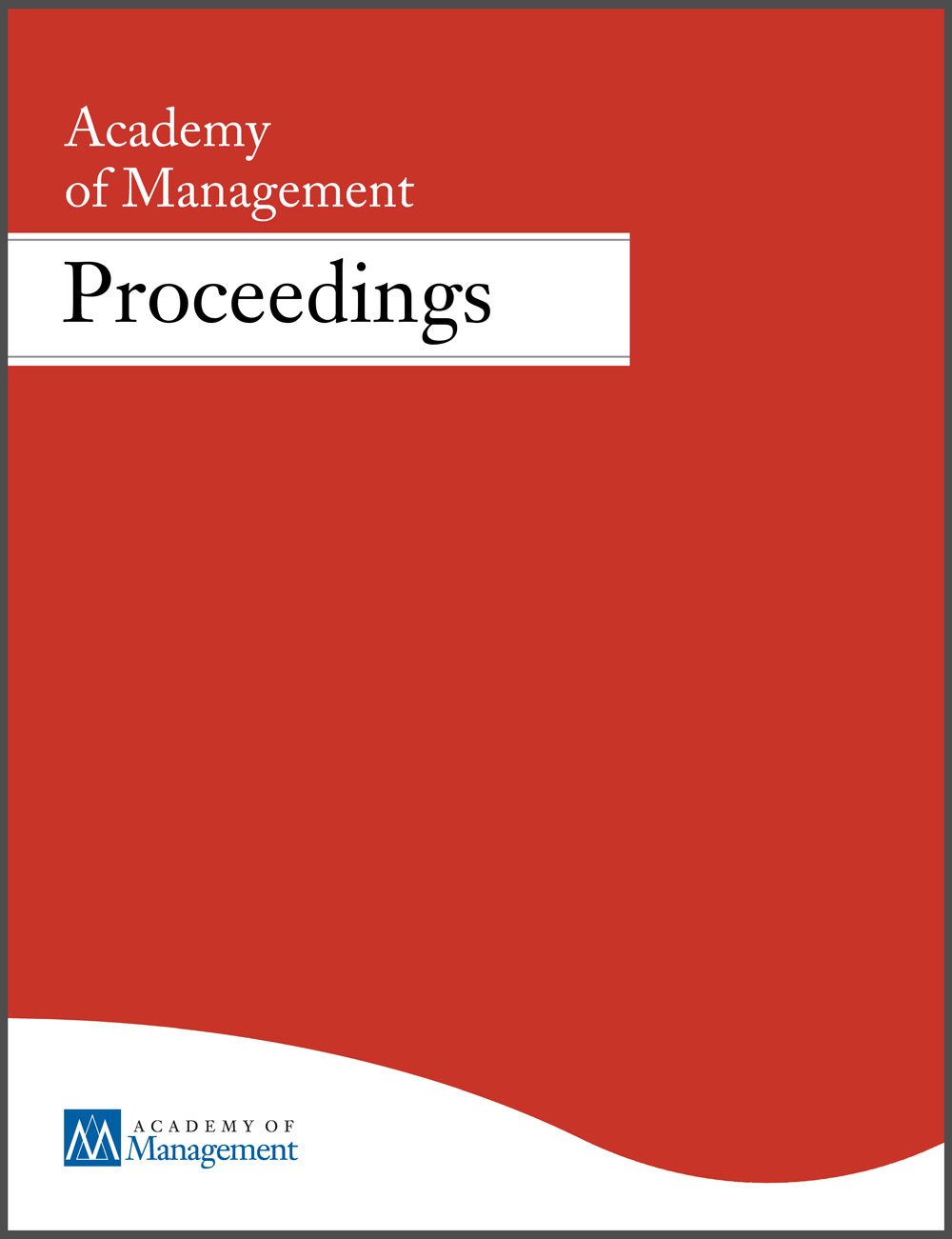Academic articles
Practitioner articles
Working papers
Books
Book chapters
Case studies
Other publications
Subject(s)
Human resources management/organizational behavior
Keyword(s)
validity, reproducibility, open science, transparency, research process
Volume
18
Journal Pages
1230–1243
Subject(s)
Diversity and inclusion; Management sciences, decision sciences and quantitative methods; Strategy and general management
Keyword(s)
Matthew effect, performance evaluation, luck, organizational learning
Success tends to increase and failure tends to decrease the chances of future success. We show that this impact of past outcomes can change how diagnostic success or failure are regarding the competence of an individual or a firm. Succeeding under adverse circumstances is especially impressive when initial failure reduces the chances of success more for low-quality agents than for high-quality agents. Succeeding after initial failure (being a ”successful underdog”) can also indicate higher expected quality than succeeding twice if initial success increases the chances of success of all agents to a high level. In different circumstances, the outcome after success can be especially informative about quality, implying that failing after an initial success (a ”one-hit wonder”) indicates lower quality than failing twice does. We find effects consistent with our model in data on Canadian professional hockey players and on data from the Music Lab experiment: initial failure combined with eventual success is associated with high quality. The results help to clarify when failure should be attributed to the person in charge or to the situation, when underdogs and individuals who overcome adversity are especially impressive, and when a na¨ıve ”more is better” heuristic for evaluating performance can be misleading.
© 2022, INFORMS
Volume
69
Journal Pages
5461–5481
ISSN (Online)
1526-5501
ISSN (Print)
0025–1909
Subject(s)
Human resources management/organizational behavior
Keyword(s)
lifelong learning, professional development, executive education, micro-learning, time management, collaborative learning, AI in education, digital tools, motivation
JEL Code(s)
D38
ISSN (Print)
0015-6914
Subject(s)
Strategy and general management
Keyword(s)
agility, organizational change, strategic alignment, incremental innovation, strategy
Volume
65
Journal Pages
63–92
Subject(s)
Human resources management/organizational behavior
Keyword(s)
leadership, management communication, managerial behavior, managing employees, meeting management, presentation skills, emotional intelligence, listening skills, public speaking
Online meetings are now part of our normal daily routines. They are easy to set up, we have hardware to make them happen, multiple software solutions and high-speed internet enable the connection. But are we really good at communicating virtually? Did we really unmute?
This multimedia case builds on a recording of a not-so successful meeting (we will refer to this video as “The Meeting”) of a distributed team. The recording is not from a real-life business meeting but a plot scripted by the authors to point out learning content and enacted by professional actors. The 5.5 minutes meeting clip activates a set of challenges that we face in online meetings:
– Unclear communication;
– Missing connection between the members;
– Lack of engagement;
– Issues with the technology.
During the case discussion students learn how they can master interactions online, create better connections with other meeting participants, and how they can maximize their online presence.
This multimedia case builds on a recording of a not-so successful meeting (we will refer to this video as “The Meeting”) of a distributed team. The recording is not from a real-life business meeting but a plot scripted by the authors to point out learning content and enacted by professional actors. The 5.5 minutes meeting clip activates a set of challenges that we face in online meetings:
– Unclear communication;
– Missing connection between the members;
– Lack of engagement;
– Issues with the technology.
During the case discussion students learn how they can master interactions online, create better connections with other meeting participants, and how they can maximize their online presence.
| buy now | buy now | buy now |
Subject(s)
Human resources management/organizational behavior
Keyword(s)
negotiation, first offer, impasses, anchoring, machine learning, big data
Volume
120
Journal Pages
e2218582120
Subject(s)
Human resources management/organizational behavior
Keyword(s)
social networks, experiments, causal inference
Despite the popularity of experimental approaches in management and related fields, the adoption of experimental research designs—laboratory, natural, or field experiments—has been slow in organizational network analysis. In recent years, there has been a growing call for more research that pays attention to experimental designs and causal inference in network analysis. This is important not only to ensure knowledge accumulation, but also because of the practical and policy implications of network research. However, relational theories, data, and methods possess peculiarities that need to be accounted for when conducting experiments. In this panel symposium, we bring together a number of leading academic experts, who have contributed to causal network research, to discuss these topics and share their experience on publishing network experiments in leading management outlets.
Volume
2023
ISSN (Online)
2151-6561
ISSN (Print)
0065-0668
Subject(s)
Diversity and inclusion; Strategy and general management
Keyword(s)
gender, career, glass ceiling, machine learning
Volume
2023
ISSN (Online)
2151-6561
ISSN (Print)
0065-0668
Subject(s)
Human resources management/organizational behavior
Keyword(s)
networking behavior, network processes, consequences of networks
Although the topic of social networks has received substantial attention from researchers in the field of management, most work on networks at the individual level of analysis has focused on examining specific characteristics of employee networks (e.g., network structure, network centrality, etc.), often from a static perspective. In contrast, relatively little work has directly focused on the behaviors employees engage in to build and manage their social networks. As a result, there is still much to be learned about when and why employees enact networking behavior. The papers in this symposium aim to address this imbalance by directly examining the antecedents and outcomes of professional networking behavior. While the research designs and theoretical lenses of the papers in this symposium vary, the papers are united in their shared focus on various aspects of networking behavior. Two papers focus directly on factors that impact the extent to which employees engage in network building, one takes a temporal approach by examining the factors that influence the speed by which network relationships are formed, and one paper examines how daily fluctuations in networking behavior influence performance outcomes. The end result is a collection of papers that provide a comprehensive look at a complex and multifaceted phenomenon that has begun to attract an increasing amount of research attention among management scholars.
Volume
2023
ISSN (Online)
2151-6561
ISSN (Print)
0065-0668
Subject(s)
Human resources management/organizational behavior; Strategy and general management
Keyword(s)
managerial and organizational cognition
Acquiring tacit knowledge is critical at work and often requires interactions, strong ties, and trust. However, it is unclear how the advent of virtual collaboration influences this process. Integrating research on virtual work, tacit knowledge, social learning, and vicarious learning, we propose that relative to face-to-face collaboration, virtual collaboration hinders the acquisition of tacit knowledge, mainly by reducing people’s observation of others’ behaviors but not the storytelling from others. We found evidence for our theory in a survey study and a critical incident study. According to the experiences from a range of professions requiring on-the-job-learning, virtual collaboration indeed hampers tacit knowledge acquisition via the reduction in observation. However, virtual collaboration is as effective as face-to-face collaboration in facilitating the acquisition of tacit knowledge via storytelling. Additionally, we find that whenever the tacit knowledge being transferred is task-based, virtual collaboration is a more effective conduit than face-to-face collaboration. When the tacit knowledge is more contextualized or embodied, such as interpersonal skills, personal development, and socialization, virtual collaboration becomes a less effective conduit than face-to-face collaboration. Our research unravels how and what people learn from others as tacit knowledge in virtual collaboration compared to face-to-face collaboration, which has important theoretical and practical implications.
With permission of the Academy of Management
Volume
2023
ISSN (Online)
2151-6561
ISSN (Print)
0065-0668




